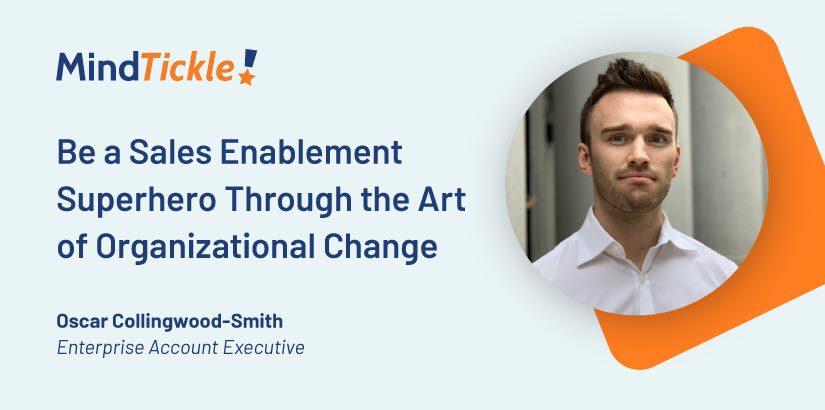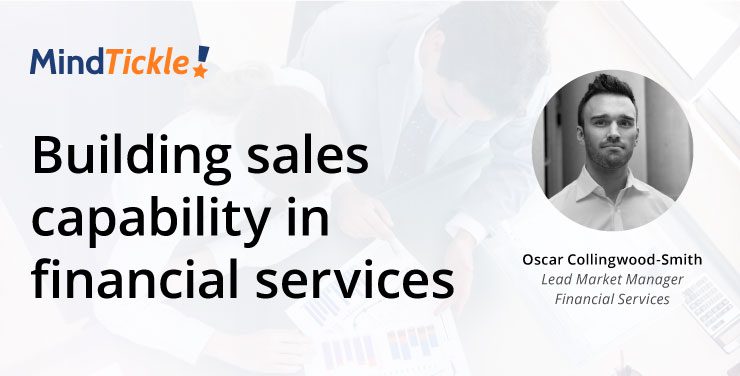Be a Sales Enablement Superhero Through the Art of Organizational Change
Change management has always been a challenge, but this year, it seems especially hard. That might be due to the incredible professional and personal change we’ve all had to deal with in response to the global pandemic. The fact of the matter is, we’ve got change fatigue. People are simply tired of change — period.
In the context of sales enablement, change and change management can be especially challenging today. For example, field sales teams have already had to pivot to the new reality of resorting to emailing, calling and web-conferencing instead of the traditional face-to-face selling where they can rely on establishing a connection in person. They’re coping with a new remote-selling environment in which distractions are abundant. And they’re dealing with longer Zoom meetings and shortened attention spans. With all this conspiring to derail their efforts to meet quota in the new normal, the last thing sales teams want to do is adopt any new training initiatives or learning processes that would — in their minds — surely further complicate their lives.
Recently I conducted a live workshop with a sales enablement leader from one of the leading asset management and financial advisory firms to help our attendees address and overcome their challenges. In our live workshop, we uncovered the five common barriers to adoption and provided seven ways to overcome them.
Barriers to adoption — and a framework for overcoming them
New change initiatives in enablement are met with any number of barriers. Here are the five most common ones:
- “We’ve always done it this way, so why change it now?”
- “We already tried that. It didn’t work then, so why try it again?”
- “Will this really make us more efficient, or is it going to be a lot of work that won’t yield a significant measure of ROI?”
- “This feels like it will be too complicated.”
- “It doesn’t seem like we know everything that we need to know about this new initiative. Shouldn’t we figure this out before we proceed?”
In order to move past these barriers and achieve adoption of any change initiative, sales enablement teams must follow some simple steps. They are:
- Establish a vision. Clearly define the change — what needs to be changed and why — and align it to sales and business goals. Revisit this vision periodically to stay on course and make sure everything is progressing in the right direction.
- Understand how to measure success. Identify some high-level metrics that define success. For example, if the adoption rate of a previous sales enablement platform was 35%, adoption of the new platform should exceed that.
- Communicate early and frequently. Clearly communicate the value of the change initiative in a way that will resonate with the sales organization. For example, explain how an enablement platform that offers microlearning delivers convenient learning in the flow of a work-from-home life; discuss with managers how data-driven coaching provides a better way to identify and remedy gaps in learning. Be transparent in all communications.
- Get leadership buy-in. Find leaders within the sales organization to be champions for the change initiative. Perhaps even more importantly, get buy-in from the sales team itself by bringing them in on the pilot program of a new initiative.
- Make it achievable. No matter the initiative, it must be made easy to achieve. For adoption of a new enablement training initiative, for example, this may mean setting up a three-minute video training for the sales team with a short quiz at the end to show them how easy it is to accomplish.
- Be flexible. Adjustments may need to be made as the initiative progresses. Be open to shifting as new concerns or issues pop up.
- Be brave. There will likely be many people poking holes in your plan. Urge everyone involved to avoid “analysis paralysis” and push forward with the understanding that nothing’s perfect, change is hard, and challenges beget growth and innovation.
Author John Maxwell said, “Change is inevitable. Growth is optional.” While embracing change can be difficult, refusing to even acknowledge it can impede overall success, especially in our current challenging environment. Now more than ever, sales enablement teams are working toward meeting the moment with change-management initiatives that prepare, equip and support sales to succeed today and into the future.






